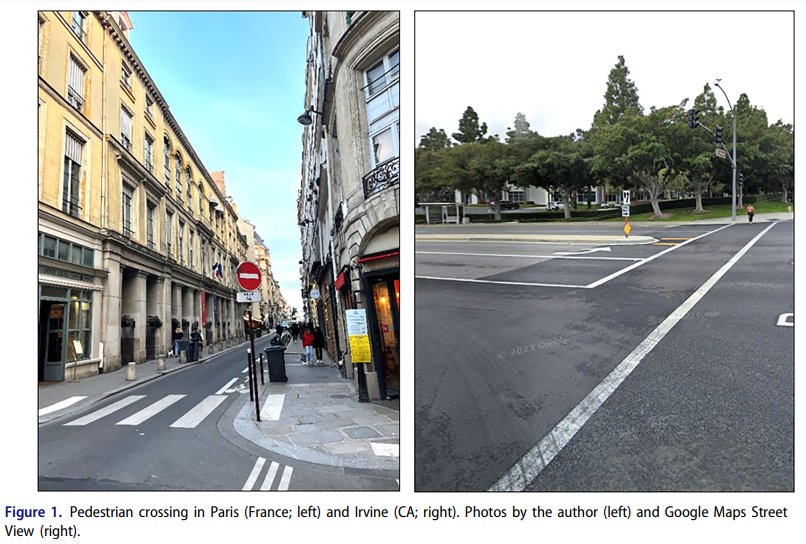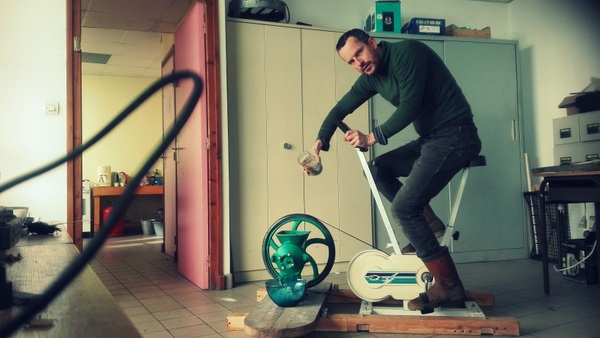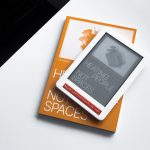Pedestrians face the greatest risk of automobile collisions when crossing a street: the longer a crossing, the higher their exposure is to oncoming cars. Despite the relevance of crossing distance, few studies have considered its variance within or across entire cities. Given that, we probed pedestrian crossing distance at the municipal scale, leveraging both OpenStreetMap and satellite imagery to quantify crossing distances at roughly 49,000 formal crossings (those parts of the roadway designated for pedestrians to cross), both marked and unmarked, at intersections and at midblock.
We measured formal pedestrian crossings throughout a dense European city (Paris [France]), a dense American city (San Francisco [CA]), and a less-dense, more car-centric American city (Irvine [CA]). This granular approach—covering roughly 49,000 total crossings—identified inter- and intraurban spatial patterns in the distribution of pedestrian crossing distance, including clusters of long crossings that likely deter walking and increase its risk. By overlaying recent pedestrian–vehicle collisions on these novel data sets we found that longer crossing distance correlated with increased likelihood of collisions, raising the salience of traffic-calming interventions.







